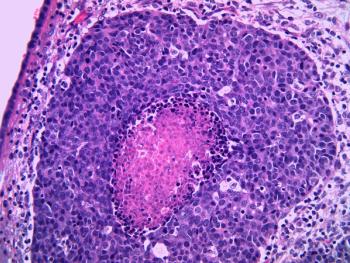
NIH Expert: ‘Women Do Not Passively Leak out of the Professional Pipeline’ in Biomedical Careers
Although the COVID-19 pandemic saw the rapid hemorrhaging of women from careers in science and medicine, research shows the toxicity experienced by women may be structural in nature.
A couple of years ago, women were being admitted to medical school at rates higher than men, explained Janine Austin Clayton, MD, FARVO, National Institutes of Health (NIH) associate director for research on Women’s Health and director of the Office of Research on Women’s Health, during the 2022 NIH Vivian W. Pinn Symposium. Following this success, the COVID-19 pandemic saw the rapid hemorrhaging of women from careers in science and medicine across the industry.
“My sincere hope is that we can turn the situation around regarding women’s careers,” Clayton said. “I hope at the end of 2022, that we have reversed the hemorrhaging of women from careers in science and medicine and that we’ve found a way to keep women healthy, happy, and inspired to show the world what we’re made of.”
Clayton noted that in a publication by Rotonya Carr on the impact of COVID-19 on the careers of women in academic sciences, engineering, and medicine, she wrote that there is potentially an entire generation of young female researchers whose careers have been derailed by the pandemic. However, researchers have begun to investigate the potential causes of these disruptions to so many professionals potentially promising careers during the pandemic.
Clayton explained that an article titled “Pushing the boundaries: A qualitative study of how STEM women adapted to disrupted work-nonwork boundaries during the COVID-19 pandemic” published in the Journal of Applied Psychology investigated some of these challenges facing women in careers in science, technology, engineering, and mathematics (STEM).
“In less than supportive environments, [women were found to] conceal their nonwork roles. But in supportive environments, they revealed them and even advocated for change, such as increased childcare support. This was more common among, but not exclusive to, tenured women with greater job security,” Clayton said.
Additionally, some women adapted to roles they had to sacrifice in light of the increased demands of the pandemic, which may have required them to disengage from work or non-work role demands when they perceived that all of their role demands could not be managed. This caused some to trade off roles, experience a psychological role withdrawal, or even decide to make a behavioral role exit, Clayton explained.
“As we know, it’s going to take systemic change to address these issues,” Clayton said. “These authors summarized their results, [which] uncovered a novel reason for women to reveal non-work information in the workplace: they actively subverted ideal worker norms by revealing their inability to adhere to them, potentially confirming the harmful stereotypes that women are not suitable for working in STEM.”
Clayton explained that this subversion behavior was particularly striking amongst STEM women, as they are a marginalized group within their workplace. Additionally, these results contradict the existing theory that predicts women, when adapting to workplace norms, would either downplay their nonwork identities or adopt positive distinctiveness strategies in order to meet the demands of their social environment.
Clayton noted that in an article published in The Atlantic discussing the departure of a vast number of health care workers from the field, author Ed Yang addressed how health care workers were not only dealing with the most grueling working conditions of their careers, but their hospitals were also cutting their salaries, reducing their benefits, canceling raises, forcing staff to work longer hours, denying paid time off or reducing hours, failing to provide adequate personal protective equipment, and downplaying the severity of their experiences. To top it off, these same hospitals were offering trite wellness tips to manage these challenges during the pandemic, such as keeping gratitude journals in order to better manage their stress and wellbeing.
Additionally, Yang noted in the article that these actions being taken by hospitals were being experienced by nurses in particular. Since the vast number of nurses working in hospitals are women, these actions by hospital administration directed at nurses were not accidental—they were sexist, according to Yang.
“Women in the biomedical workforce in the hospital system are really canaries in the coalmine in terms of what they’re facing,” Clayton said. “One in 5 health care workers have left the workforce, and they are showing us, through their exodus, that not only is their environment toxic, but it’s toxic because of structural toxicity.”
Additionally, although the vast number of nurses working in the frontlines of the pandemic in hospitals are women, 82% of the CEOs of hospitals are men.
“Think about what might have motivated [these] hospital administrators in the system, beside the obvious need to address the incredible demand of patients,” Clayton said before pausing and circling the statistic showing 82% of hospital CEOs were men on her shared screen during her lecture, “this might have something to do with that.”
Shifting to a discussion of career paths for women in STEM, Clayton noted that a contemporary view of career paths is not best captured as a pipeline, which has only a single entry point. With this metaphor, if you miss that entry point, you might be left out of the professional pipeline permanently, Clayton explained.
“Women do not passively leak out of the pipeline, and the pipeline really no longer captures the reality of a modern STEM career,” Clayton said. “Rather, a braided river is the new metaphor for a career path, where you can see mentorship and holistic support beneath an inclusive STEM workforce supporting this braided river that has many paths that emerge and diverge, [with] islands within the ecosystem that are connected in various ways. Fostering a system in which many paths can meet and diverge requires us to envision scientific knowledge and training as a part of a new ecosystem rather than a solitary path. A new ecosystem is going to require systemic change, of course.”
REFERENCE
Clayton JA. Impact of COVID-19 on the Careers of Women. NIH Vivian W. Pinn Symposium. May 12, 2022. Accessed June 10, 2022.
Newsletter
Stay informed on drug updates, treatment guidelines, and pharmacy practice trends—subscribe to Pharmacy Times for weekly clinical insights.

















































































































































































































